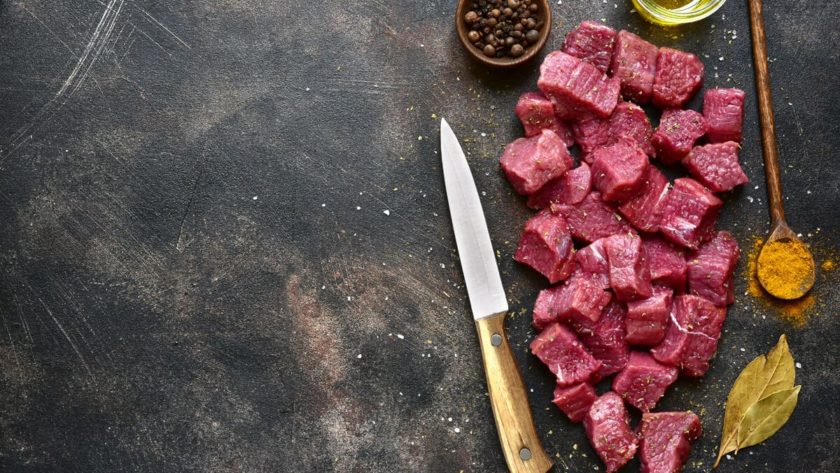UPDATE: The Gluten-Free, Paleolithic (Paleo) and Raw Food diets have become trends, movements and lifestyles, but before you embark on any of them, here’s where they hit and where they miss.
Gluten-Free Diet
 This diet excludes all foods that contain gluten, a protein found in wheat, barley, rye, malts, and triticale.
This diet excludes all foods that contain gluten, a protein found in wheat, barley, rye, malts, and triticale.
The G-Free Up Side: This diet is necessary for people with celiac disease or a gluten allergy or sensitivity. By eliminating gluten from the diet, many popular processed snack foods, cookies and cakes that are high in calories and void of nutrients are off limits.
The G-Free Down Side: Many gluten-free products are not fortified or enriched with nutrients, such as fiber, folic acid and iron (risking anemia). They may also be less easy to access although gluten-free products and menus are becoming more readily available.
Paleo Diet
 Also known as the “caveman” or “hunter-gatherer” diet, the Paleo diet is based on foods consumed during the Paleolithic era. That is, if the cavemen didn’t eat it, then you shouldn’t either. Paleo followers eat foods that can be hunted or fished (e.g., wild game, fish or grass-fed beef) or gathered (e.g., wild plants, fungi, roots, nuts and seeds).
Also known as the “caveman” or “hunter-gatherer” diet, the Paleo diet is based on foods consumed during the Paleolithic era. That is, if the cavemen didn’t eat it, then you shouldn’t either. Paleo followers eat foods that can be hunted or fished (e.g., wild game, fish or grass-fed beef) or gathered (e.g., wild plants, fungi, roots, nuts and seeds).
The Paleo Up Side: This diet excludes refined salt, refined sugar, artificial additives, dairy fats, alcohol, and refined oils. These banished foods are the key ingredients in processed foods where an over-consumption can lead to obesity, diabetes, hypertension, high cholesterol, cancer, and heart disease.
The Paleo Down Side: Paleo practitioners try to mimic the ancestral diet and what they “think” cavemen ate. They exclude grains, potatoes and legumes (e.g., beans) — excellent sources of fiber and protein — as well as dairy. The diet is very high in protein derived from animal foods which are high in cholesterol and saturated fats. If you’re not diligent about making lean meat choices and eating it in moderation, you can increase your risk for heart disease. It is relatively low in plant foods (carbohydrates) which are a vital source of phytonutrients and fiber.
Raw Food Diet
 The raw food diet consumes only uncooked foods with the belief that cooking destroys valuable enzymes. It is generally based on raw fruits, vegetables, nuts, seeds, sprouted grains, unpasteurized eggs, raw fish (sushi), raw meat (carpaccio), and raw milk/yogurt where raw plant foods have not been heated above 104°F.
The raw food diet consumes only uncooked foods with the belief that cooking destroys valuable enzymes. It is generally based on raw fruits, vegetables, nuts, seeds, sprouted grains, unpasteurized eggs, raw fish (sushi), raw meat (carpaccio), and raw milk/yogurt where raw plant foods have not been heated above 104°F.
The Raw Food Up Side: Since raw foodists only consume uncooked foods, the high-fat, nutrient-poor commercially processed foods are not a part of this culture. They consume a lot of fruits and vegetables which contain valuable life-extending antioxidants.
The Raw Food Down Side: Cooking vegetables has a purpose. It breaks down the insoluble fiber and makes them edible. According to a study, for example, people that followed a strict raw food diet have low levels of the valuable antioxidant lycopene which is found largely in tomatoes.
Cooking lycopene-rich vegetables actually increases their lycopene content. This is because the heat breaks down the plant’s thick cell walls which releases some of the nutrients bound to their surfaces. Also, raw foodists are vulnerable to food-borne illnesses since food contaminated with bacteria isn’t destroyed by heat.
![]() Karen’s Fit Tip: As with any fad diet, eliminating entire food groups and types of foods can be difficult to sustain and increases your risk for disordered eating. A healthy successful eating plan is one that you can sustain throughout your lifetime.
Karen’s Fit Tip: As with any fad diet, eliminating entire food groups and types of foods can be difficult to sustain and increases your risk for disordered eating. A healthy successful eating plan is one that you can sustain throughout your lifetime.

